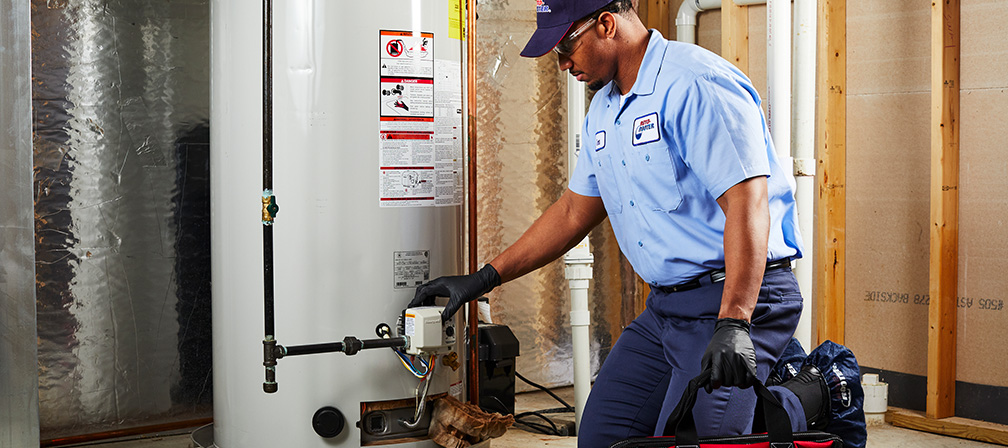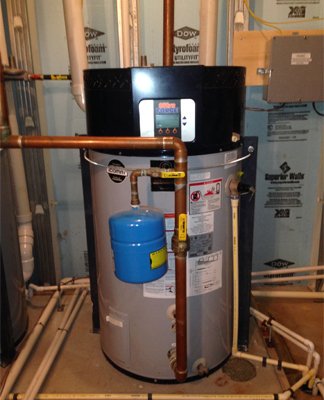The Ultimate Overview to Safe and Effective Hot Water Heater Installment
The installment of a water heating system is an important task that needs precise attention to detail and adherence to security criteria. As we discover the necessary parts of an effective installment, it's essential to take into consideration the possible challenges that can occur if not come close to with treatment.
Selecting the Right Hot Water Heater
When choosing a water heating unit, home owners have to consider a number of critical aspects to guarantee ideal performance and efficiency. The first consideration is the kind of water heater, which typically includes tankless, storage container, warmth pump, and solar designs. Each type has its own advantages and negative aspects, affecting power consumption, recuperation rates, and setup demands.
Following, it is necessary to evaluate the size or capability of the water heater. This depends upon the household's warm water need, which can vary based upon the number of occupants and their use patterns. An unit that is also tiny will certainly lead to insufficient warm water supply, while an extra-large unit might throw away power.
Energy efficiency is one more essential element. Property owners should try to find systems with high energy element (EF) ratings, as these show far better efficiency and lower operating expense over time. Additionally, the fuel resource-- electrical power, all-natural gas, or propane-- will certainly influence both setup expenses and continuous expenditures.
Planning For Setup
Appropriate preparation is critical for an effective water heating unit installation, and there are a number of key steps property owners must follow. Initially, examine the installation place to guarantee it adheres to neighborhood building codes and safety and security policies. This consists of monitoring for sufficient air flow, clearance space, and accessibility for upkeep.
Next, transform off the water system and electricity or gas to the existing hot water heater to avoid any kind of crashes during the installment procedure. Drain pipes the old unit entirely to prevent any type of spills, and disconnect it from the pipes and power resources.
In addition, gather pertinent documentation such as service warranties, setup guidebooks, and local plumbing codes to make certain compliance. If any upgrades are required for pipes or electric systems to suit the brand-new unit., this is additionally the time to determine.
Finally, consider informing your neighbors if the setup may cause interruptions, and guarantee that pet dogs and children are avoided the workspace. By taking these preparatory actions, home owners can help with a smoother installment process, decreasing possible hold-ups and complications.
Devices and Materials Needed
A well-organized toolkit is crucial for a successful water heating system setup. Having the right tools and materials handy not only simplifies the procedure however additionally makes certain safety and security and compliance with neighborhood codes.
First, gather standard hand devices, consisting of a monkey wrench, adjustable wrench, screwdrivers (both level and Phillips), pliers, and an utility knife. These will assist in removing old fittings and securing brand-new connections. A drill with appropriate little bits may be required for mounting and safeguarding the water heater.
Following, guarantee you have pipes materials such as Teflon tape, pipeline fittings, and versatile hoses for attaching water lines. For gas hot water heater, a gas line port and a pipeline joint compound are vital. Consider also having a level to make certain appropriate alignment.
Security equipment must not be overlooked; handwear covers and safety and security goggles secure versus potential risks. Verify the schedule of essential products like a brand-new water heater, expansion continue reading this storage tank (if needed), and any kind of extra insulation or airing vent parts.
Step-by-Step Installation Process

Following, prepare the brand-new hot water heater by putting it in the designated area, guaranteeing it is degree and stable. Link the cool water supply line to the inlet and the warm water line to the electrical outlet, making use of ideal fittings. For gas heating units, ensure the gas line is correctly linked which all fittings are protected.
When the pipes links are developed, connect the power supply. For electric heating units, this entails wiring the unit to the electric panel, adhering to regional codes. For gas devices, make certain to mount an airing vent system that satisfies safety criteria.

Security Tips and Ideal Practices
Ensuring safety and security throughout water heater installation is paramount to avoid accidents and ensure a smooth operation. Most importantly, switch off the power supply or gas line to the existing system before beginning any type of work. This will certainly reduce the risk of electric shock or gas leakages. Additionally, it is essential to wear ideal individual safety devices (PPE), such as gloves and safety goggles, to guard versus prospective risks.
Prior to setup, inspect the location for any kind of signs of water damages, mold, or structural concerns that may pose threats during or after the setup procedure. Make certain that the installation adheres to neighborhood building ordinance and supplier standards to prevent future responsibilities. water heater. It is a good idea to have a fire extinguisher nearby, specifically when collaborating with gas units
During the installment, keep proper ventilation to stop gas accumulation. By adhering to these safety and security ideas and visit ideal methods, you can make sure an effective water heating unit setup.
Final Thought
In verdict, effective installation official website of a water heating unit needs meticulous preparation and adherence to safety and security protocols. Conformity with neighborhood codes, appropriate preparation of the setup website, and making use of proper tools and materials are vital for making sure an efficient procedure. Implementing security tips and ideal practices secures both the installer and the residential or commercial property. For those lacking experience, employing the services of a qualified professional is a good idea to assure optimal safety and performance of the water heater.
Guarantee the water supply is turned off and the existing water heating unit is separated. Link the chilly water supply line to the inlet and the hot water line to the outlet, making use of appropriate installations.Guaranteeing safety during water heating system setup is critical to protect against mishaps and guarantee a smooth operation.Before installation, examine the area for any kind of indications of water damages, mold and mildew, or architectural concerns that may position risks during or after the installment procedure. By adhering to these security pointers and best practices, you can guarantee an effective water heating system installation.